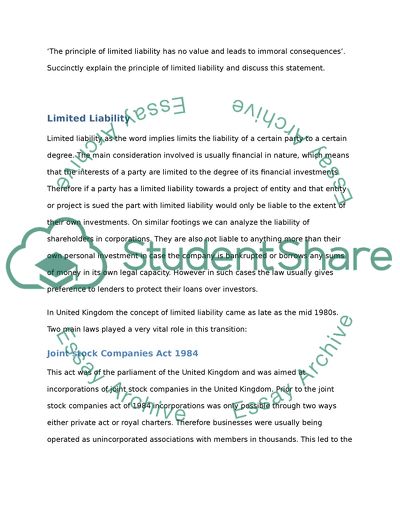Cite this document
(The Principle of Limited Liability Case Study Example | Topics and Well Written Essays - 1750 words - 4, n.d.)
The Principle of Limited Liability Case Study Example | Topics and Well Written Essays - 1750 words - 4. Retrieved from https://studentshare.org/law/1737890-company-law
The Principle of Limited Liability Case Study Example | Topics and Well Written Essays - 1750 words - 4. Retrieved from https://studentshare.org/law/1737890-company-law
(The Principle of Limited Liability Case Study Example | Topics and Well Written Essays - 1750 Words - 4)
The Principle of Limited Liability Case Study Example | Topics and Well Written Essays - 1750 Words - 4. https://studentshare.org/law/1737890-company-law.
The Principle of Limited Liability Case Study Example | Topics and Well Written Essays - 1750 Words - 4. https://studentshare.org/law/1737890-company-law.
“The Principle of Limited Liability Case Study Example | Topics and Well Written Essays - 1750 Words - 4”. https://studentshare.org/law/1737890-company-law.


